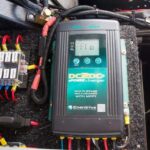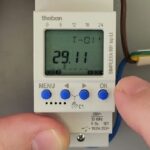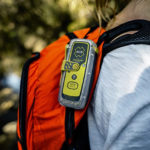It doesn’t matter if you’re a part-time off-roader or a full-time RVer, your time away from the grid means that you are just as proactive about monitoring your storage batteries and energy needs as you are about your solar panels. It takes more than just basic battery bank information like voltage and current power readings to manage them properly, though.
Having clear visibility to vitals such as your batteries’ state of charge and energy consumption is as much about knowing how reliable your whole storage system is, as it is about how long you can stay off the grid. When there’s a power problem or a deficit, you need to know about it as quickly as possible.
In short, an effective battery management system (BMS) has to begin with a top-notch battery monitor. It’s the single most vital instrument there is for knowing the exact state of your battery bank, and it can help you avoid costly system failures just as quickly as prevent untimely system power shortages.
Shunt-Type Battery Monitors Protect Your Power System
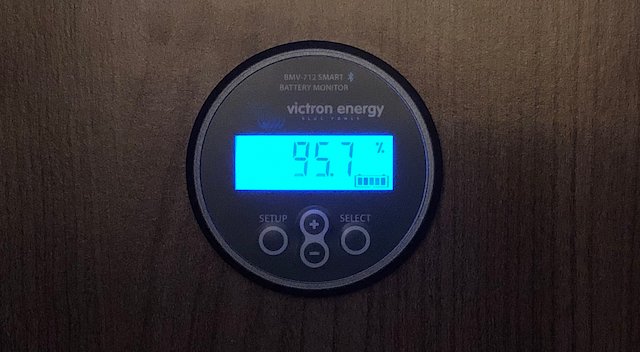
Let’s be honest: although RV storage systems and BMS technologies can vary widely, there no question about how essential a shunt-type deep cycle battery monitor is for ensuring that your battery bank is functioning safely and smoothly at all times. From multi-featured monitors with wall-mounted LED displays, to all-in-one smart monitors that allow you to use your cell phone or tablet as their display, a good flush-mounted 6.5 – 70VAC monitor is crucial for giving you all the core information you need to know about storage system, including:
- When it’s over-charging, or is over current/voltage when charging;
- Whether it’s over-discharging, or is under voltage when discharging; or,
- If it’s operating outside of its optimal temperature range.
These are critical state of charge (SoC) parameters that require faultless monitoring, regardless of whether your battery bank is wired in a series or parallel configuration. They’re even more important, however, when you consider how sensitive some types of deep cycle batteries are when used in off-grid battery banks. Overheating, over-charging, or over-discharging can shorten battery life as well as create conditions that are potentially dangerous; these are the reasons why a high quality RV or caravan battery monitor is such an indispensable part of protecting your power system.
Choosing the Battery Monitor Display That’s Right for You
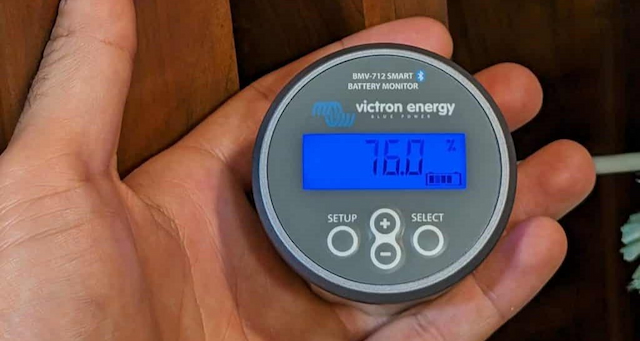
Shunt-type battery monitors are the most common types of monitors, and they’re highly regarded for both their simplicity and reliability. These devices are designed to use the known resistance of a built-in conductor to measure the current passing through the negative side of your battery bank, and to convey that information to a separate display.
A shunt type battery monitor also uses either a printed side circuit board or a fully enclosed circuit with connectors to collect the information. But while both types provide the same data monitoring and collecting functions, their physical difference is the main determinant in whether a unit is designed to be operated via a permanently installed display, individually via Bluetooth, or possibly both.
In most case, fully enclosed Bluetooth RV battery monitor units tend to be the favourite because they are:
- IP65-rated for water resistance and operation in less-than-perfect conditions;
- Capable of being convenient control and monitoring from anywhere near the unit, without the need to do so from the display unit; and,
- Don’t require any extra cutting, mounting, or wiring that a display-type unit would require.
Both types of solar battery monitors, however, can be fully integrated with a complete range of BMS off-grid devices like charge controllers and inverters. Together, they give you the ability to maintain real-time control of your battery bank under any circumstance, and to receive an instant alarm whenever the system’s high or low voltage, or temperature parameters exceed your preset thresholds.
Monitoring Battery Bank Parameters That Matter
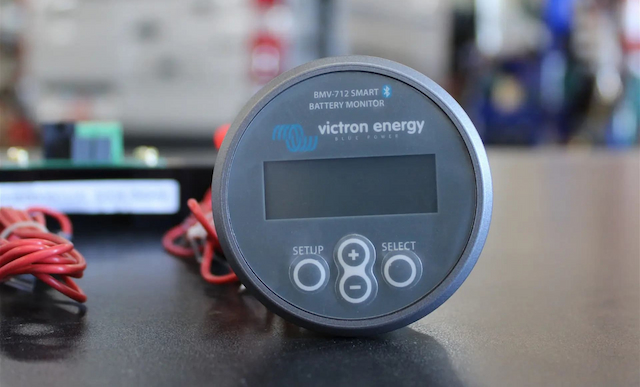
Make no mistake: even though the choice between permanently-installed display or Bluetooth caravan RV battery monitors is a matter of convenience, they both still provide the same degree of high quality data on a range of battery parameters that include:
- State of charge. When expressed between 0 -100%, this is the tangible state of the battery’s charge.
- Battery voltage. This is the terminal voltage of the battery bank.
- Battery current. This is a measurement of the current flowing into or away from the battery bank.
- Battery Power. This is a measurement of the power being drawn from, or received by the battery bank.
- Time Remaining. This is an estimation of how long the battery bank can support its present load.
And through your BMS, your RV or campervan battery monitor can even be used to measure the DC energy consumption of individual devices and circuits. It’s all the battery storage information that you need to ensure your electrical system is in optimal condition.
Data That Helps You Perform Proper Battery Bank Analysis
Trend and historical information are also a major part of what a superior quality RV battery voltage monitor has to offer. Most units retain a full complement of SoC and battery bank information that can be retrieved and analyzed later to identify possible weaknesses in the storage system, including logs on:
- Charge information. Most monitors will maintain a full record of your system’s charge cycles, the amount of time since its last full charge, and the number of times it’s been fully discharged.
- Discharge information. Along with your system’s most recent and deepest discharge, an RV battery monitor panel will also indicated the average and cumulative number of amp hours (Ahs) drawn in a given cycle.
- Energy in kilowatt hours (kWh). In kWhs, the total amount of energy that the battery system has charged and discharged.
- Battery voltage. An effective record on the highest and lowest battery voltage recorded the monitor.
- Voltage alarms. A complete record of the number of times a high or low-voltage alarm was generated.
In short, with a fully synchronizing solar battery monitor installed with your BMS, you can have the full history of your battery storage system from each zero current calibration to next, all at your fingertips.
The Final Word
At the end of the day, there’s no question why monitoring your battery bank’s performance is so important. The integrity of your power system depends on that bank being able to meet your energy demands, and you need instruments that you can rely on to notify you as quickly as possible if there’s a problem.
A shunt-type deep cycle battery monitor will help give your BMS all the real-time and historical battery information you need to keep your power safe and reliable. It’ll give you the welcomed assurance you want every time you go off the grid.

